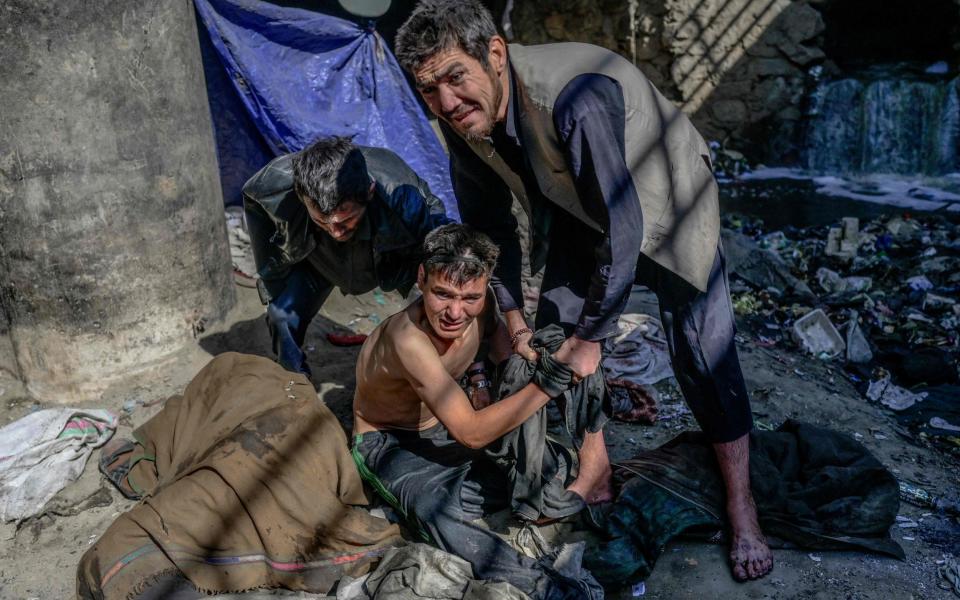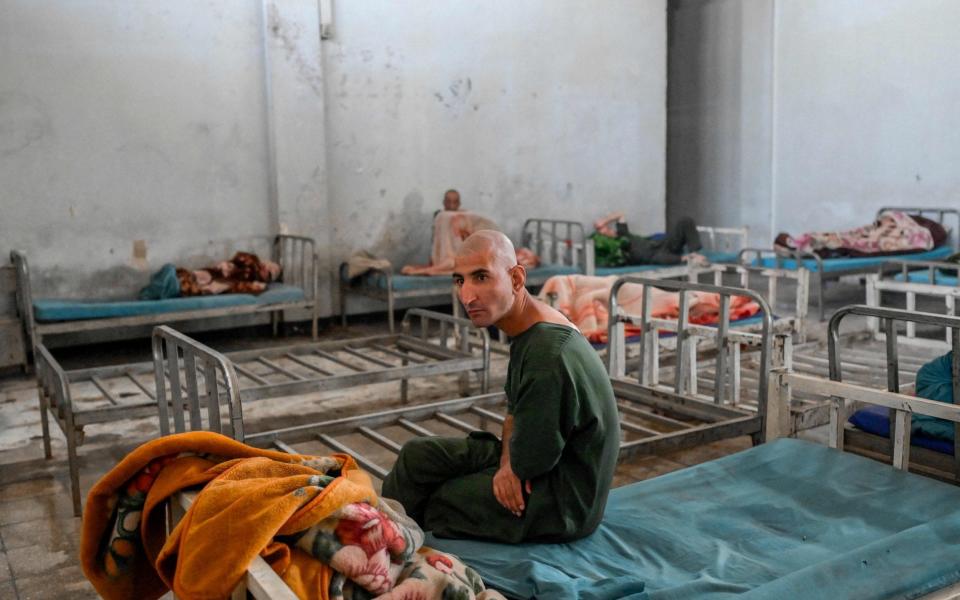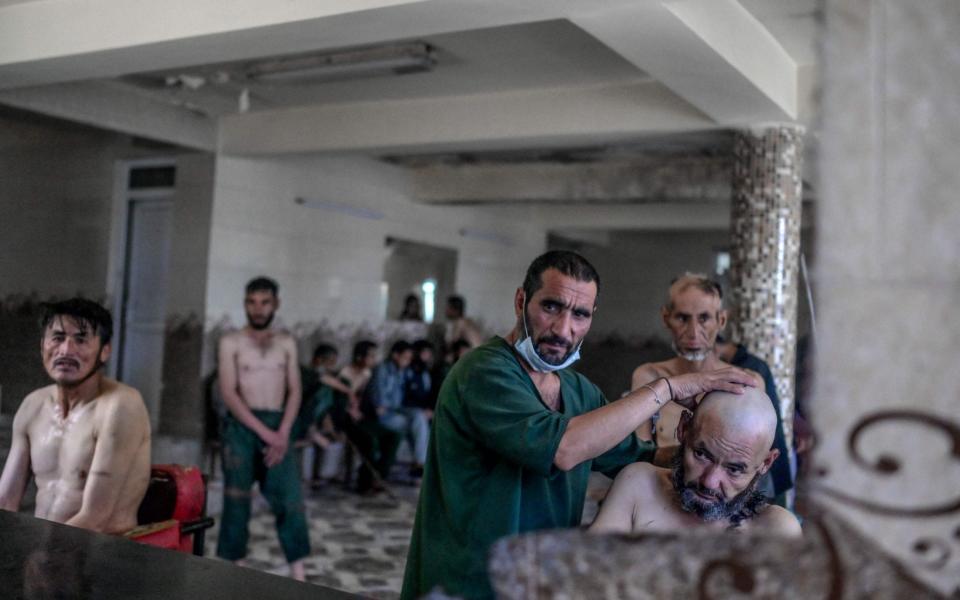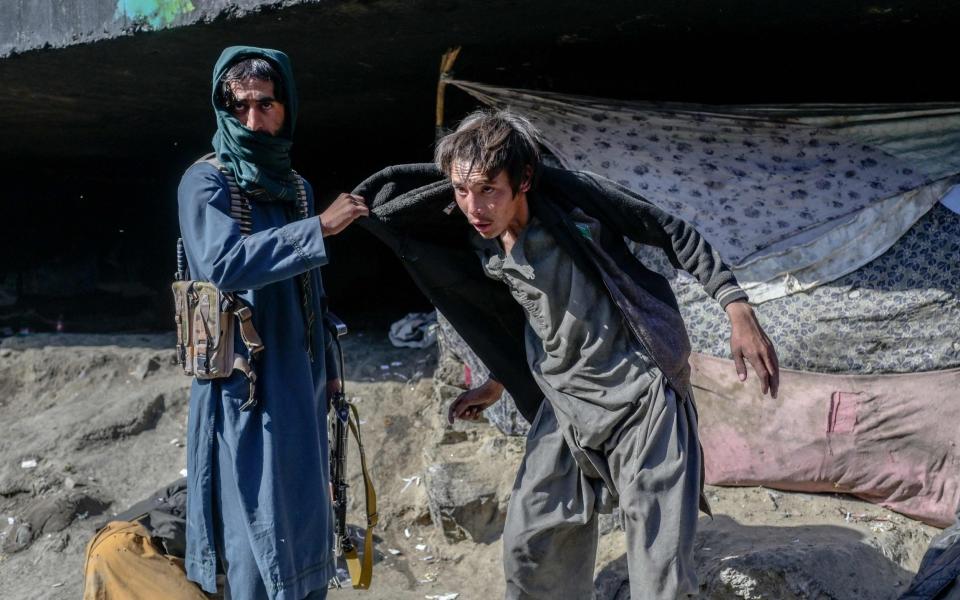Detoxing the Taliban way: Inside the clinic where Afghanistan's addicts are forced into withdrawal

With shaved heads, oversized tunics and the terrified gaze of the haunted, the drug addicts rounded up by the Taliban brace for 45 days of painful withdrawal.
For some, the hardliners' raids may potentially help them cast off the yoke of addiction. But for many the stay at Kabul's Ibn Sina centre will just mark a short change of scene, marked by a brutal approach to forcing users off their powerful dependence.
Before the Taliban marched into Kabul on Aug 15, police in the capital would sometimes arrest addicts and transfer them to the centre. But since the hardline Islamists took control, the frequency of raids on areas where addicts gather appears to have increased.
Hundreds of users shelter in squalid conditions at Pul-e-Sukhta, under a bridge in western Kabul synonymous with hard drugs and violent crime.
Watch: Under Taliban, Kabul's drug addicts forced into withdrawal


They recognise the rehab clinic's ambulance, and those who can lift themselves off the fetid ground stagger down the rubbish-strewn Paghman River to avoid capture, while many are too intoxicated to wake up.
Two Taliban fighters, armed with M16 and AK-47 rifles, prod the comatose heroin and methamphetamine users with their gun barrels as outreach workers wrestle with men before forcing them to the vehicle.
The gunmen fire a few shots into the air to assert their authority and shock the addicts, before about 20 are rounded up and whisked away.
'God willing, we can go home'
During their 45-day rehabilitation stay at the 1,000-bed centre, the men spend their time lying on cots in large dormitories or crouched in the yard, soaking up the autumn sun.
There is little methadone available to help wean the opium and heroin addicts, and nothing to remove the withdrawal pains for those being weaned off of meth, doctors say.


This morning, Emal, 36, shuffles into the registration room. A volunteer, who like many others working here is a former addict, opens his logbook and notes that it is the fourth time he has been here. He was last discharged just 10 days ago.
As Emal leaves, 22-year-old Bilal Ahmad, skinny and jittery, takes a seat. He is also addicted to meth, and has been through the programme before, "one or one and a half year years ago".
"I am happy to be here," he said, casting fearful, furtive glances around the room that indicate he is not. "In 45 days, God willing, we can go home."
The men are searched carefully when they arrive.
"Open your mouth. Wider. Lift your tongue," another member of staff at the clinic tells the new arrivals, before checking their shoes and clothes for traces of drugs.
In groups of six, they then shuffle to the tiled building that houses the showers. There, their baggy khaki tunics and trousers are removed and they are handed a packet of shampoo, but no towel.
When they emerge, dripping, they are handed over to a team of barbers who shave their heads to prevent the spread of lice, but leave their scraggy beards.


Some are taken to rooms lined with five beds, while others are ushered into a dormitory where around 30 men of all ages are already lying on top of their covers.
A cheap and easy crop to grow
Poppy cultivation was banned under the Taliban's last rule in the 1990s, but the export of heroin from Taliban-controlled areas provided the hardliners with billions of dollars during their insurgency against the United States and the Western-backed government.
With poppies cheap and easy to grow, Afghanistan provides around 90 per cent of the world's production of heroin.
Crystal methamphetamine production has also surged, created from the ephedra plant that grows wild in the country.
According to anti-narcotics experts, 11 per cent of Afghanistan's 34 million population are drug users, with four to six per cent addicted.


Since sweeping back into power, the Taliban have promised not to allow narcotics production.
"It is the policy of the Islamic Emirate," said Doctor Ahmad Zoher Sultani, who heads the centre located in an old US army base.
For now, the staff in the centre are all working without pay. Salaries have not been paid out for four months as Afghanistan's economy teeters on the verge of collapse.
Dr Sultani says he was worried that the Taliban would shut his clinic when they first seized power.
"Their intentions towards us were not clear," he said, but added that the country's new rulers had "quickly told us they wanted us to continue."
Watch: Afghanistan - Money and power drive Afghanistan's opium production - but how will the Taliban wean themselves off the profitable trade?

 Yahoo Movies
Yahoo Movies 
